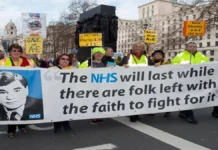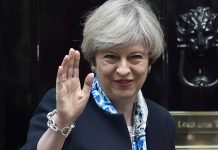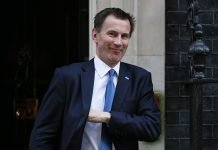Millions of people took to the streets in cities around the world on Friday to call for action against climate change, in what has been dubbed the largest climate protest ever.
The demonstrations — scheduled to continue for a week — were planned in over 150 countries. Protesters marched on low-lying Pacific islands under threat from rising seas, and in cities from Warsaw to Melbourne, from Nairobi to London and hundreds of other places; #GlobalClimateStrike, #FridaysForFuture, #ClimateChange were top trending topics on Twitter.
The marches come ahead of Monday’s U.N. climate summit in New York, where Secretary-General António Guterres will cajole national leaders to boost their emissions reductions promises for 2030 and to commit to becoming climate neutral by 2050.
The protests, and the U.N. summit, are reactions to the grim drumbeat of scientific reports showing that global warming is getting worse, and steps taken so far fall well short of what’s needed to bring it under control.
“This planet is getting hotter than a young Leonardo DiCaprio,” said one sign waved in Poland. “There is no planet B,” said another in the U.K. “Denial is not a policy,” read a sign in Dublin.
From London to New York City and from Perth to Paris, climate activists are taking part in a global general strike on Friday in what is expected to be the biggest day of climate demonstrations in the planet’s history.
Some of the first protests were held in Australia and organizers have said “well over” 300,000 people gathered at more than 100 cities and towns across that country. Melbourne hosted the biggest march, according to organizers, with 100,000 people turning out, while 80,000 rallied in Sydney and 30,000 in Brisbane.
The Global Climate Strike is the third in a worldwide series of climate rallies organized by school students, and led by 16-year-old Greta Thunberg. Protestors hope to put pressure on politicians and policy makers to act on climate issues.
Fridays for future. The school strike continues! #climatestrike #klimatstrejk #FridaysForFuture pic.twitter.com/5jej011Qtp
— Greta Thunberg (@GretaThunberg) 16 September 2018
Sweeping across Africa and Europe
London
Emily travelled from Cambridge to the rally in central London for her first demonstration.
“This is really good fun—and I think it’s making a difference, climate change is getting reported a lot and it’s trending on Twitter” she said.
Ellen and Helen were dancing in Parliament Square when they spoke to Socialist Worker.
“This is amazing” said Helen. “It’s so energetic, it feels really powerful to be here. I’ve never been on a demonstration before but I’m defiantly going to come again and bring all my mates.”
Ellen said they’d both been inspired by Greta Thunberg.
“That made me think ‘I need to do something’. I all starts with people’s actions,” she said.
Hundreds of school students occupied nearby Lambeth Bridge – despite a heavy police presence.
Cops linked arms and tried to prevent the students from leaving on one side of the bridge but soon caved in.
It was then that chants turned angrier, with hundreds of protesters shouting, “Shame on you” and “Fuck the police”.
4.30pm
Manchester
In Manchester, after a march that some activists estimated was as large as 5,000, people returned to the starting point at Manchester Central Library.
The march was mostly made up of school students, but there were many older people as well, so that it had a real mix on it.
The day finished with music and an open mic for speeches. Many school students who had never spoken in front of crowds before took the chance to speak.
One of them, Will, said he had only heard of the march yesterday.He said it was fantastic to march with so many people but, “It’s sobering to realise that the people who don’t really care and who are only about money are the ones who we still end up keeping in power.
“I’m disappointed that people haven’t got them out yet.”
Another school student who had never spoken before said, “We can keep up what we’re doing and we’ll be able to save the planet.”
One marcher, Sara, told Socialist Worker that this had been her first climate strike march. “It’s amazing that there’s so many people here,” she said. “I never heard about the others before they happened. When I found out about this one I knew I had to come because we need to provoke change.”
4.13pm
Cambridge
Cambridge saw its biggest climate protest to date, reports Tom Woodcock
Several thousand people rallied at the county hall for speeches led entirely by school students.
Delegations from many public sector unions were present including a well organised block of student doctors, lecturers from the university and FE as well as representatives from teaching unions and council staff.
There were significant organised groups of charity workers such as Greenpeace, The RSPB and Flora and Fauna International, where the workplaces had been closed for the day.
Many others had left work for the day of their own accord.
A march then shut down the town centre as numbers were swelled by workers leaving their offices to join the protests.
A co-ordinated “die in” filled the entire street and lawns in front of the famous King’s College.
School and college students spoke again to the crowd about their frustration with politicians and of their desire to carry on until the fight against climate change was won.
4pm
Glasgow
3.58pm
Tower Hamlets London
School students across Tower Hamlets in east London took part in actions today, writes Sheila McGregor.
Fifty students from St Paul’s Way school marched and spoke at a rally in Altab Ali park.
Later there was sit-down at Bethnal Green tube
3.48pm
Bristol
In Bristol there is a carnival atmosphere on College Green, as people listen to music, speeches and relax before the next action of the day after their march around the city.
They plan to protest at the Fountains from 5pm as people leave work.
Some workers have already joined the school students. Lucas, a young IT worker from nearby Bath, told Socialist Worker, “Big business has so much power and money holds so much sway.
“Look at Boris Johnson—he gets paid £200,000 for his Telegraph column by the Barclay brothers.”
But Lucas argued that “bringing people together and making a ruckus” can force action on climate change. “Bringing the city to a standstill here is affecting the micro economy,” he said. “It will make businesses think.”
In Bristol one of the most popular chants is, “This is what democracy looks like.”
Sophie, a first time school striker, told Socialist Worker, “We’ve only got a few years and we can’t go back.
“People need to take responsibility and do something.”
3.45pm
Brighton
At least 7,000 people marched through Brighton and Hove as trade unionists joined school students and many others.
UCU union members at Brighton University and University of Sussex walked out for the afternoon, and Brighton & Hove city council Unison and NEU members brought banners.
Some shops closed their doors as a festival mood swept the city.
3.34pm
Some Guy Smallman photos in London
Westminster protest (Pic: Guy Smallman)
Westminster protest (Pic: Guy Smallman)
Soas walkout (Pic: Guy Smallman)
Soas walkout marches to join the protests (Pic: Guy Smallman)
3.20pm
Birmingham
Several thousand people joined the school student strike in Victoria Square in Birmingham. Overwhelmingly young it was noisy and vibrant.
As we marched they sang “this is what democracy looks like”.
Not content with one march when we returned to the square from the first march they set off out the other way for a second.
3.15pm
Chesterfield
3.11pm
Plymouth
More than 2,000 people marched through the centre of Plymouth to a die-in and people’s assembly, reports Tony Staunton.
School students and college and university students marched from the top of town and a trade union march joined them from the other direction.
Trade union banners and flags attended including PCS, RMT, Unison, Unite, GMB and the Plymouth Trades Union Council.
Extinction Rebellion distributed leaflets advertising the October Rebellion and coaches from Plymouth to London for the 7 October rebellion and the 12 October trade union day of convergence at Westminster.
3.08pm
Sheffield
Around 5,000 people marched in Sheffield from Devonshire Green to Barker’s Pool.
3.00pm
Manchester workers speak out
In Manchester members of the Unite union’s NW389 charity workers’ branch marched chanting “Seize the banks, reclaim the wealth – spend it on the planet’s health.”
One of them, Ali, told Socialist Worker, “Climate change is a workers’ issue. It’s really important workers join this and create that change.
“We’ve never experienced a just transition, and it’s also important that includes good, unionised jobs.”
Michael Coates came with a delegation from the UCU union at Manchester Metropolitan university.
He said UCU and Unison at both universities in Manchester had pressured managers into allowing workers to take time off to join the protest.
“UCU has been instrumental in supporting action for the climate,” he told Socialist Worker.
“It’s the young people taking the lead and it’s important that we give them encouragement by being here.”
Mike Killian brought ten workers from his workplace, Transport For Greater Manchester.
“It’s a good start,” he said. “It’s the largest we’ve had so far on any of these.
“With the other unions from around Manchester, we have to go back and build this to be bigger – use the enthusiasm of the members that we’ve got here, to build it to something bigger in our workplaces, and spread it to other workplaces and branches.”
In Salford around 300 people joined a rally outside the civic centre, including school students and members of the Salford City Unison union branch who handed out wristbands saying “System change not climate change”.
Around 15-20 Salford council workers then travelled to join the march in Manchester – some by bicycle.
Ameen Hadi from Salford City Unison told Socialist Worker, “It’s a really good start from our branch – but I think we can do better next time. When people see how big this is they’ll want to be part of it.”
Simon, also from Salford City Unison, said it was good the union had got managers to let workers join the protests. “It shows what you can do with a strong union,” he said.
2.50pm
Hackney, London
Up to 1,000 people made a “big noise” at 1pm outside Hackney town hall in east London today.
Earlier a rally heard students and teachers from several schools plus hospital andcouncil workers, community groups, charities and others.
Hackney’s mayor, Philip Glanville, also spoke.
All spoke about the need to protest and fight to force governments to take action to stop climate change.
2.40pm
Leeds
Thousands march in Leeds (Pic: Neil Terry)
2.25pm
Around the marches and rallies
Amazon & Microsoft workers striking
Thunberg is to speak in NYC, which gave 1.1 million students permission to skip school
Next week promises to be very interesting and could lead to a step change politically around the world
The campaign for a radical Green New Deal in the UK
This is a "Pay as You Feel" website Please help keep us Ad Free.
You can have access to all of our online work for free. However if you want to support what we do, you could make a small donation to help us keep writing. The choice is entirely yours.

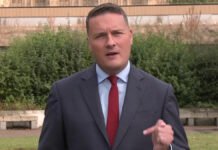








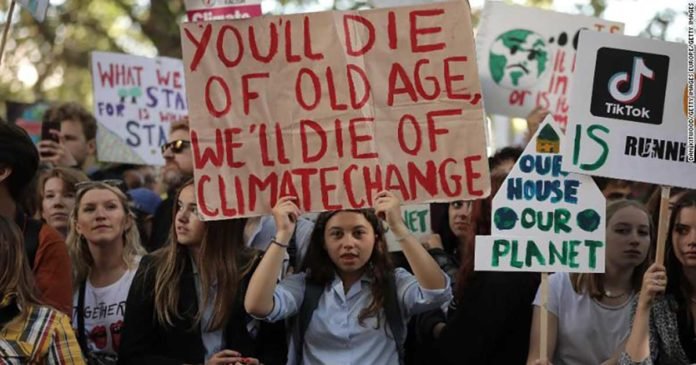




















.jpg)
.jpg)



